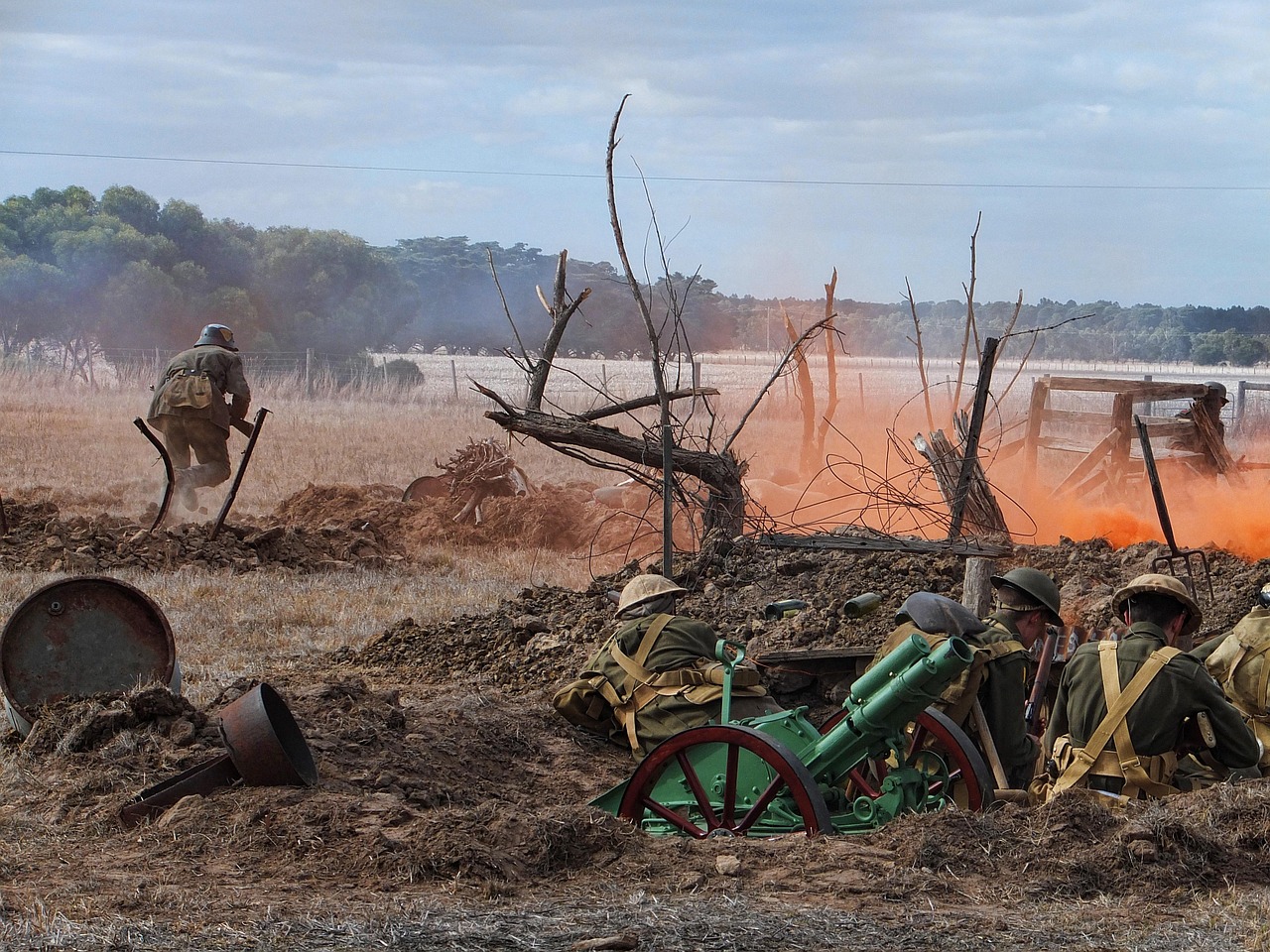“The birds sing because they know you’re safe.”
Alina’s mother whispered these gentle words every night as she tucked her six-year-old daughter into bed, when she fell asleep every night to the sound of birdsong outside her bedroom window in Bucha, Ukraine.
But one cold morning in February 2022, the birds were silent.
Missiles screamed through the sky. Alina’s mother wrapped her in a blanket and ran. The world outside was fire and smoke. They took shelter in a basement far from home. Days turned into weeks. The trees where the birds once nested were shattered. The only songs Alina heard were sirens. Alina’s world was torn apart, not just by war, but by the destruction of everything that once gave her home its voice.
War doesn’t just kill people. It destroys the land, the trees, the rivers, and the songs that once filled the air. And when the last bird falls silent, what will be left to remind us of what peace truly means?
Russia’s invasion of Ukraine on the 24th of February, 2022, marked the start of Europe’s largest military conflict since WWII. While the consequences of war are typically measured as a result of human, financial, and societal costs, the ecosystem is frequently the silent sufferer.
Ukraine, often called the “Green Heart of Europe,” was home to a wide range of habitats, including rare steppes, ancient beech forests, coastal wetlands, and alpine meadows. The country supported about 35% of Europe’s biodiversity, with around 70,000 plant and animal species. However, the recent military conflict posed significant damage. Movements of heavy vehicles, explosions, and fires affected more than 100,000 hectares of ecosystems.[i] Fire incidents increased substantially compared to the previous year, and approximately 30% of Ukraine’s protected areas suffered impacts from shelling, pollution, and military activities.
This tragic pattern is not unique to Ukraine. A decade of conflict in Syria has also left deep environmental scars. Even before the war, poor environmental management and a severe drought[ii] between 2006 and 2010 had weakened the country’s agriculture and increased vulnerability. The conflict, which began in 2011 and has caused between 384,000 and 593,000 deaths, displaced 13.5 million people, and led to economic losses exceeding $400 billion, has also wreaked havoc on Syria’s environment.[iii]
Heavy use of explosives, destruction of oil refineries, widespread soil contamination, and pollution have degraded land and water resources. The reliance on makeshift, highly polluting oil refineries has worsened air quality and emissions. Mismanagement of waste and water, especially in crowded urban areas, has further strained public health and ecosystems. Fires, deforestation, soil and vegetation degradation, and water depletion[iv] have been widely reported, compounding Syria’s humanitarian crisis.
Both Ukraine and Syria illustrate how war’s damage goes beyond immediate human suffering to threaten the natural foundations of life and recovery.
But it’s not just war, but the weapons and tactics of warfare themselves can leave toxic legacies. A stark historical example of toxic warfare is found in Vietnam, where the U.S. military used a chemical defoliant known as Agent Orange during the Vietnam War. Between 1961 and 1971, over 91 million liters of Agent Orange were sprayed across Vietnam, damaging about 3.1 million hectares of rich tropical forests and mangroves stretching more than 1,000 kilometers from Quang Tri to Ca Mau.[v] Though the spraying ended more than 50 years ago, the impact is still felt today. Over 4 million people[vi], including local communities and war veterans, have suffered from various cancers and birth defects linked to the exposure.
Even the NATO airstrikes in the Kosovo conflict, bombings hit chemical and industrial sites in Serbia, especially in the town of Pancevo.[vii] This caused the release of harmful substances like mercury, vinyl chloride, and dioxins into the air and nearby rivers, putting both the environment and public health at serious risk.
Recognizing these atrocious acts causing severe damage to the environment, many international treaties have come into force including the chemical and biological weapon conventions. Article VII of CWC[viii], requires countries to take all necessary steps to protect the environment by destroying chemical weapons, minimizing harm to ecosystems and human health.
Further, the Additional Protocol I to the Geneva Conventions[ix] (1977) establishes explicit legal safeguards for the natural environment during international armed conflicts. Article 35(3) prohibits methods or means of warfare that are intended or expected to cause “widespread, long-term and severe damage to the natural environment.” Additionally, Article 55 reinforces this by requiring that care be taken in warfare to protect the natural environment against such damage, emphasizing that environmental destruction is not only ecologically harmful but also threatens the health and survival of civilian populations.
The ENMOD Convention[x] (1976) highlights the serious environmental risks posed by warfare by prohibiting the use of environmental modification techniques, such as inducing floods, earthquakes, or droughts, for hostile or military purposes. Under Article I, states commit not to use such methods when their effects could be widespread, long-lasting, or severe, recognizing that manipulating the natural environment as a weapon can lead to devastating and irreversible ecological harm.
The Rome Statute of the International Criminal Court[xi] (1998) also establishes accountability by categorizing certain acts of environmental destruction during conflict as war crimes. Article 8(2)(b)(iv) specifically criminalizes intentionally launching attacks that are known to cause widespread, long-term, and severe damage to the natural environment, especially when such destruction is clearly excessive compared to the anticipated military advantage[xii]. These legal frameworks collectively reflect an evolving global consciousness toward environmental preservation in war.
Moreover, The International Committee of the Red Cross (ICRC), suggests that during armed conflicts, the involved parties should agree to protect important and fragile natural areas like national parks, nature reserves, and key habitats by making them demilitarized zones.[xiii] This means these places would be kept free from military activities to help preserve the environment both in peace and during war.
Even with these laws, the question remains: do they really protect the environment, or are they just promises that go unfulfilled while the land suffers?
The International Criminal Court (ICC), created to hold war criminals accountable, has struggled to address environmental damage effectively. While the ICC prosecutes serious crimes like genocide and crimes against humanity, environmental harm during war is seen as a minor issue and often overlooked. Moreover, the ICC can only prosecute individuals, not states or military organizations[xiv], which means governments causing environmental destruction often escape responsibility.
According to a study by Scientists for Global Responsibility and the Conflict and Environment Observatory, militaries worldwide are responsible for about 5.5 percent of global greenhouse gas emissions.[xv] The heavy energy use in conflicts, both in maintaining armies and fighting wars adding onto to the climate crisis, yet these emissions are often left out of international climate agreements like Paris Agreement and Kyoto Protocol due to national security concerns.
Further, the length of a war does not lessen the damage it causes to the environment. During the 34-day conflict between Israel and Lebanon in 2006, the bombing of the Jiyeh power plant released between 10,000 and 15,000 tons of oil into the Mediterranean Sea.[xvi] This massive spill polluted much of the Lebanese coastline and even reached parts of Syria[xvii]. The toxic oil killed countless seabirds and marine animals, devastating ecosystems that had taken years to build.
These environmental wounds do not simply fade with time; they ripple across generations, destroying livelihoods, displacing communities, and erasing the natural beauty and balance that sustain life.
To effectively address the environmental impact of war, stronger international cooperation and enforcement of existing laws are essential. Parties involved in conflicts must prioritize the protection of vulnerable ecosystems by designating sensitive areas as demilitarized zones and committing to avoid actions that cause long-term environmental harm. Additionally, environmental experts should be included in peace negotiations and post-conflict reconstruction to ensure ecosystems are restored alongside communities. There must also be greater accountability for environmental destruction, including expanding legal frameworks to hold states and military organizations responsible, not just individuals.
The environmental devastation caused by war endures long after the battle ceases, undermining ecosystems and posing profound challenges to restoration and future resilience.
[i] https://wwfcee.org/our-offices/ukraine/assessing-the-environmental-impacts-of-the-war-in-ukraine
[ii] Colin P Kelley and others, ‘Climate Change in the Fertile Crescent and Implications of the Recent Syrian Drought’ (2015) 112(11) Proceedings of the National Academy of Sciences of the USA 3241 https://doi.org/10.1073/pnas.1421533112
[iii] https://www.globalforestwatch.org/dashboards/country/SYR/
[iv] https://www.icrc.org/en/document/syria-water-crisis-after-10-years-war
[v] Truong KN and Dinh KV, ‘Agent Orange: Half-Century Effects on the Vietnamese Wildlife Have Been Ignored’ (2021) 55 Environmental Science & Technology 15007
[vi] https://anzacportal.dva.gov.au/wars-and-missions/vietnam-war
[vii]https://ieer.org/resource/press-releases/nato-bombing-in-balkans-could-result-in-widespread-ecological-disaster/
[viii] Chemical Weapons Convention (opened for signature 13 January 1993, entered into force 29 April 1997) 1974 UNTS 45, art VII.
[ix] Protocol Additional to the Geneva Conventions, Protection of Victims of International Armed Conflicts (Protocol I) (adopted 8 June 1977, entered into force 7 December 1978) 1125 UNTS 3.
[x] Convention on the Prohibition of Military or Any Other Hostile Use of Environmental Modification Techniques (ENMOD) (adopted 10 December 1976, entered into force 5 October 1978) 1108 UNTS 151, art I.
[xi] Rome Statute of the International Criminal Court (adopted 17 July 1998, entered into force 1 July 2002) 2187 UNTS 3.
[xii] Ibid
[xiii] International Committee of the Red Cross, ‘The Review of the 1994 ICRC Report on the Protection of the Environment in Time of Armed Conflict’ (1994)
[xiv] Rome Statute of the International Criminal Court (adopted 17 July 1998, entered into force 1 July 2002) 2187 UNTS 90, art 25.
[xv] https://www.un.org/en/peace-and-security/how-conflict-impacts-our-environment
[xvi]https://www.rempec.org/en/our-work/pollution-preparedness-and-response/response/accident-map/2006-jiyeh-power-plant-oil-spill
[xvii]Ibid


Leave a Reply